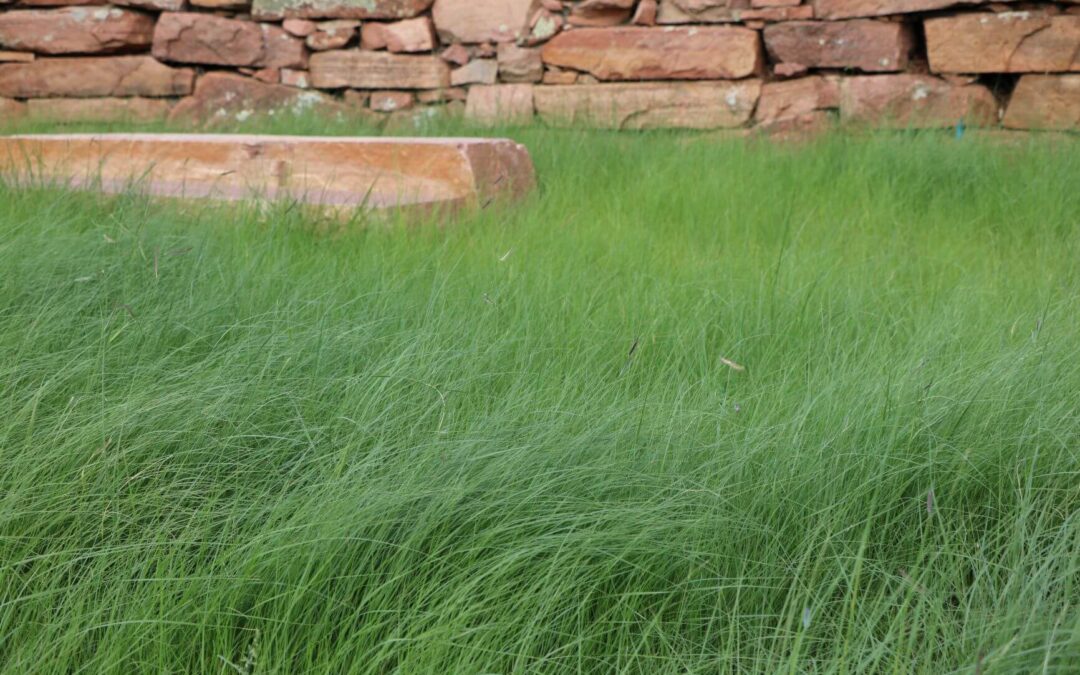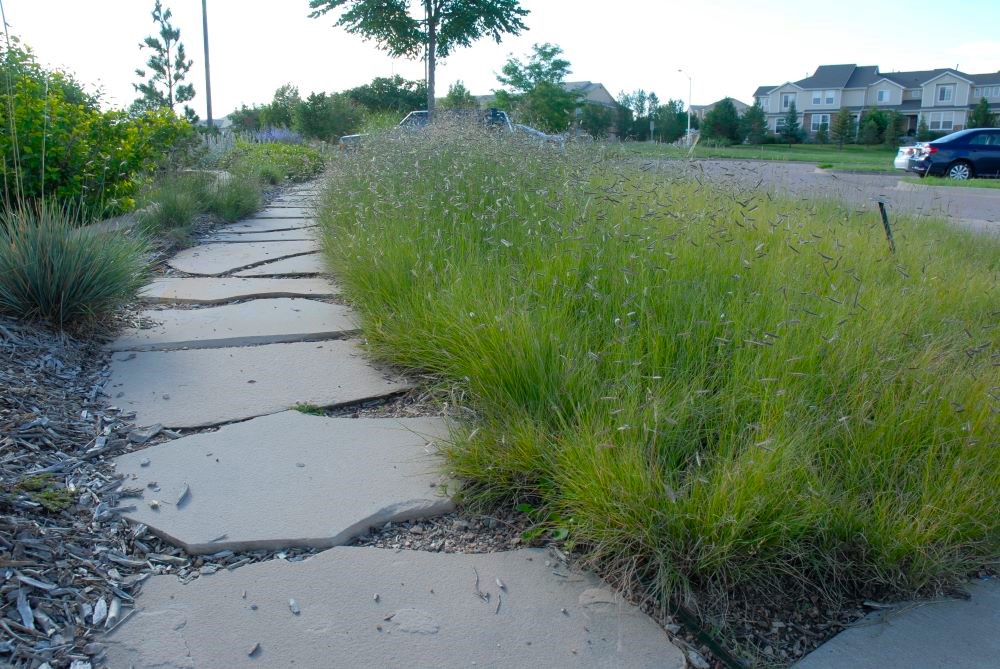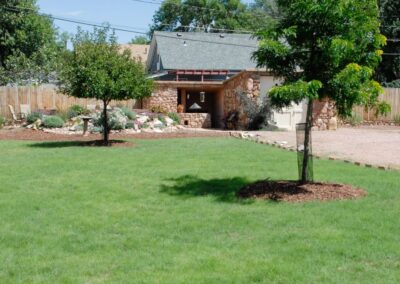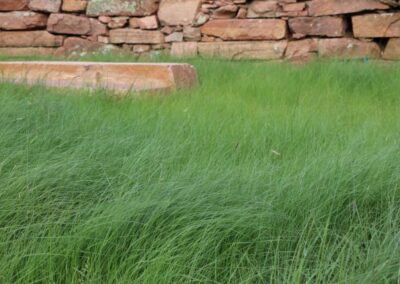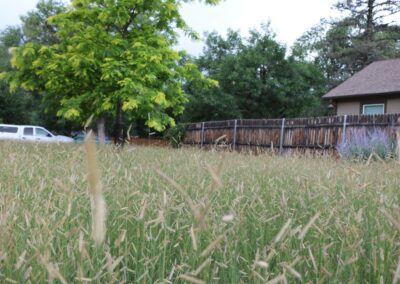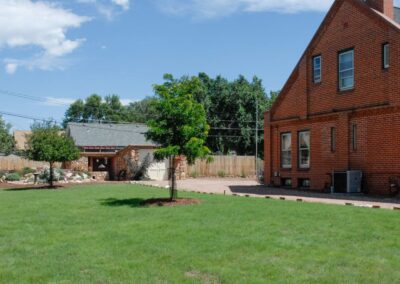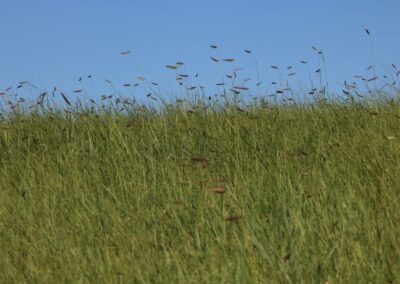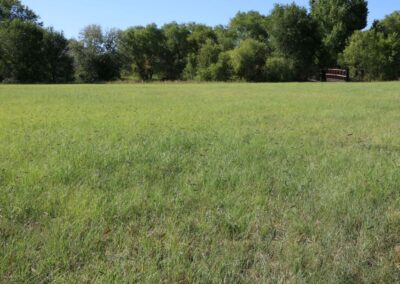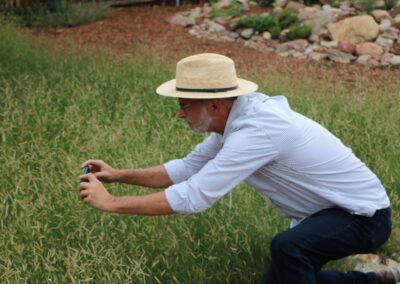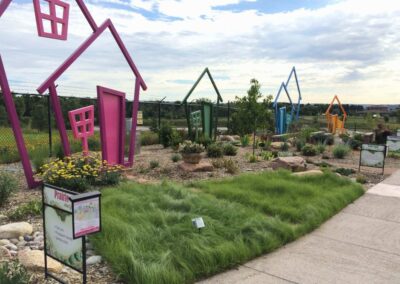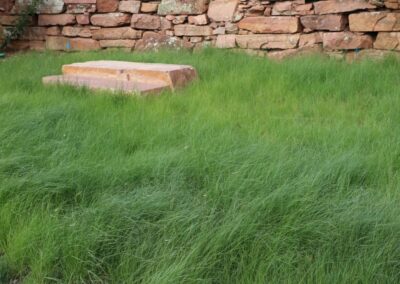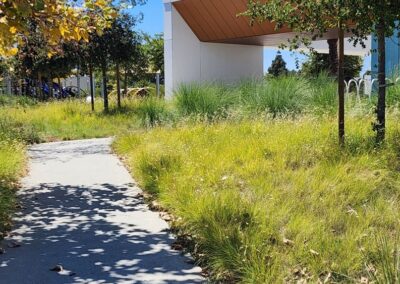Blue Grama Grass
Bouteloua gracilis
Blue grama grass is a great option for hot, sunny, and dry areas where maintenance will be limited.
Active Growth
April-October
Light Needs
Full Sun
Origin
Native
Best For:
- Landscapes with full sun
- Low-maintenance landscapes
- Sites with gravely or sandy soils
- Projects requiring quick germination
- Hot, dry slopes
- Areas that aren’t watered in winter
Not Suited For:
- Landscapes that require frequent mowing
- Shady landscapes
- Areas under large trees
- Elevations above 8,500 feet
- Sports fields or repetitive use areas
Tolerates: Drought, slopes with full sun exposure, and most soil types
Irrigation need (FRONT RANGE)
No Irrigation
Turf Irrigation
Water Use: Requires about ⅓ of the water of a traditional lawn. Water once per week or less, May to October
Using Blue Grama Grass
Blue grama is a wonderful option for naturalistic or low maintenance areas with less frequent watering. It needs at least six hours of sun to thrive, and grows in areas up to 8,500 feet in elevation. This grass turns green later in spring (April) and turns brown earlier in fall (late October) than a traditional lawn. It’s not tolerant of foot traffic and is best suited to front yards or areas where people and pets don’t walk repeatedly.
Blue Grama Attributes
- Bunch-type, warm-season grass, grows best in mid-summer
- Blue-green in color
- Leaf height of 6-12 inches and overall height of 12-24 inches with seedheads
- Can provide a uniform stand but will be less dense at ground level as a bunch-type grass
- The state grass of Colorado; adaptable to many different locations
- Provides numerous ecological benefits
- Does not tolerate salts, like roadway salts used for snow/ice removal, or pet urine
- Intolerant of temporary flooding
Installing Blue Grama
- Ideal seeding time is June 1 to July 31 when soil temperatures are 65 degrees or greater
- Blue grama should be seeded at a depth of 0.25 inches; seeding too deep can result in poor germination
- Seeding rate for landscape projects is 1 to 1.5 lbs per 1,000 square feet
- Cultivars and notes:
- ‘Hachita’ is a common, successfully-used cultivar in Colorado landscapes
- ‘Alma’ and ‘Bad River’ also work well
General
Blue grama seed germinates quickly (as little as five days after seeding). Seedlings grow rapidly, and with focused care, can cover the soil by the end of the first growing season.
Weed Management
Blue grama projects often have weeds, which should be controlled as early as they are identifiable to reduce competition for moisture and nutrients. Blue grama can be sensitive to many herbicides, so use a product like carfentrazone to control weeds early on.
Watering for Establishment
Blue grama grass seed is very small and needs consistent soil surface moisture to germinate. Because blue grama seed should be planted more than 0.25 inches deep, it’s especially important for uniform, successful germination that the soil surface is kept moist until seedlings emerge. In the first two weeks, keep the soil consistently moist but avoid runoff and pooling. In weeks three and four, moisten the soil daily to prevent new seedlings from dehydrating. Fix any irrigation problems as quickly as possible to prevent seedlings from drying out and dying.
Fertilizer During Establishment
Fertilizing new seedling stands helps them grow quickly so that their leaves fully cover the soil. Apply a controlled-release or organic fertilizer at planting OR fertilize regularly with a very light dose of quickly available fertilizer. A light dose of fertilizer can be applied as often as weekly, but at a significantly lower rate than standard lawn fertilization. Apply 0.1-0.2 pounds of nitrogen per 1,000 square feet each time the area is fertilized during the establishment period. Do not fertilize after mid-August.
Mowing During Establishment
Mowing blue grama periodically during establishment can improve its uniformity and create a better appearance until it fills in. Once it reaches 5-7 inches tall, mow it as high as possible—ideally so the grass is 4-6 inches tall after mowing. Leaving the grass longer going into it’s first winter can reduce soil erosion and weeds the following summer.
Long-Term Watering
Once established, blue grama grass needs 8-10 inches of supplemental irrigation or less per growing season. This means watering once per week or less from May to October, and not watering at all during the winter when the grass is dormant (brown). Blue grama will grow taller with frequent summer rains or when it’s watered more often. Less frequent watering will keep it shorter.
Once the grass has matured, schedule irrigation to meet your project goals and desired grass appearance. Overwatering results in increased weed competition and encourages cool-season grass invasion.
Mowing
Blue grama cannot tolerate low or frequent mowing like turf grasses, and performs best when mowed three to four times per year or less. If the grass grows tall enough to look unsightly or cause concern, mow it as high as possible, ideally to 4-6 inches tall after mowing. Avoid letting the grass grow extremely tall and then mowing it short. Mowing blue grama may require specialized equipment or a mowing subcontractor, as not all mowers can be adjusted this high. Do not leave clumps of clippings on top of the mowed grass.
Along Colorado’s Front Range, blue grama has been successfully maintained being mowed once in February, and monthly in June, July, and August when it is growing rapidly. Mowing once the seedheads have formed is optional depending on the desired fall and winter appearance. Leaving the grass longer over the winter can prevent soil erosion and prevent weeds the following summer.
Weed Control
Blue grama can be sensitive to herbicides, and most herbicides are not tested for safety on blue grama.
Fertilizing
To foster a dense stand of blue grama, fertilize once or twice in June or July when the grass is growing rapidly. Apply nitrogen at 1 lb/1000 square feet of area. Low-input, naturalized, or restored areas do not need to be fertilized at all, but may be less dense and develop some spaces between plants over time.
Start your project
Discover how to plan and implement a native grass project for long-term success.
